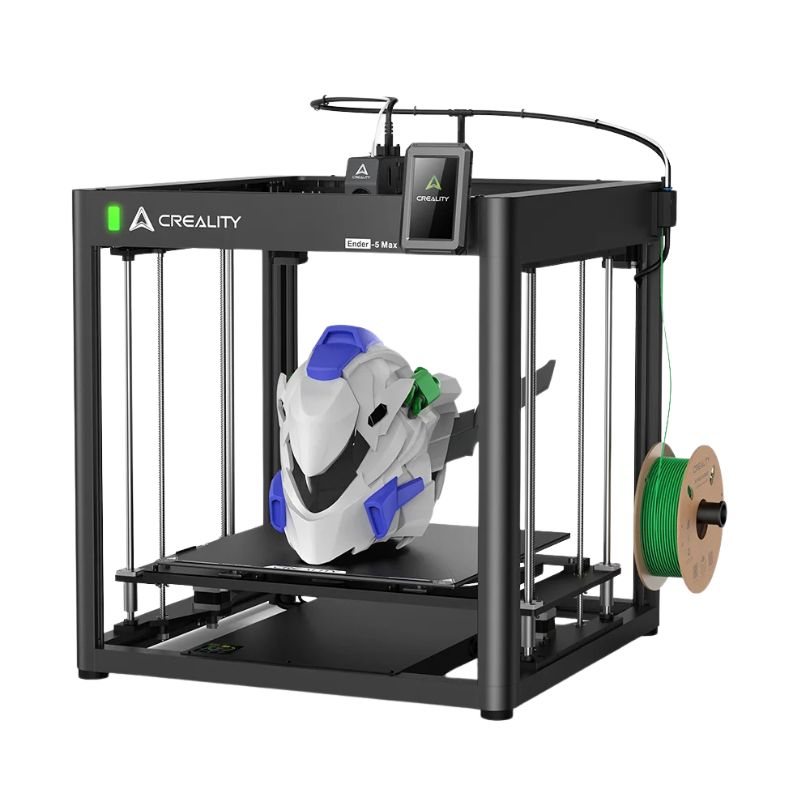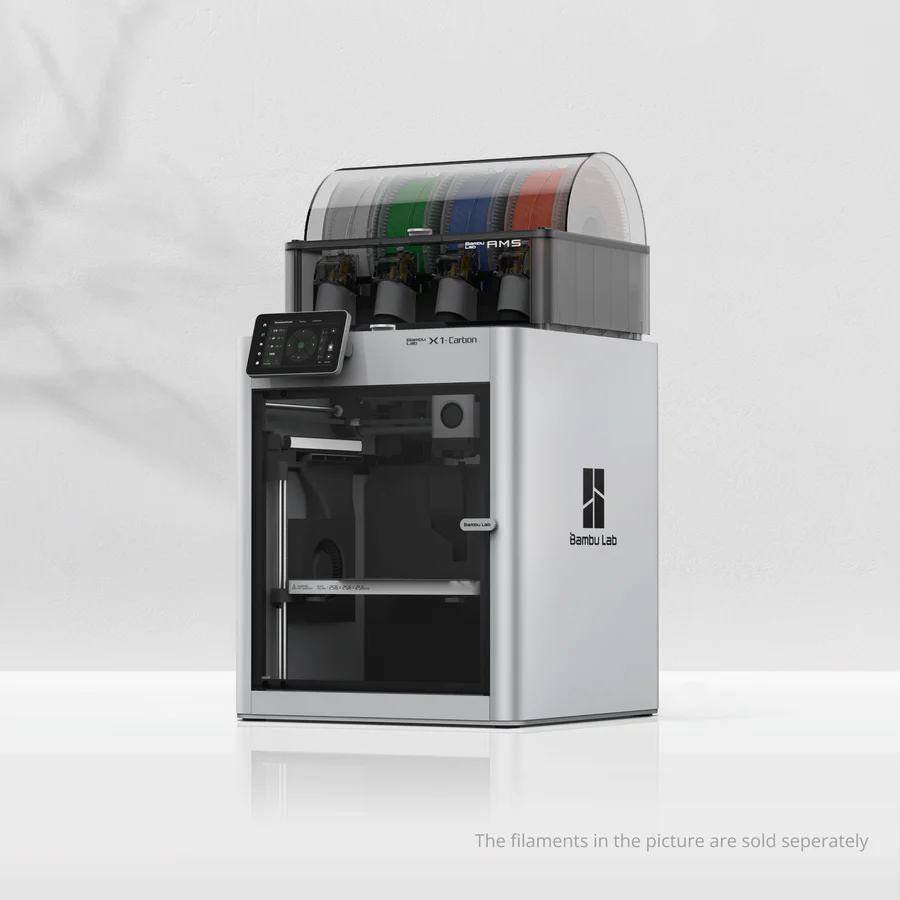Compare Ender 5 Max vs X1 carbon
Comparison between the best 3D printers
Choose the best 3D printer at the best price. The cheapest 3D printers are here.
Buy a 3D printer here with 3D Fila.
 |
 |
|
| Model | Ender 5 Max |
X1 carbon |
| Printing Material | Filament | Filament |
| Buy Filament for Creality Ender 5 Max | Buy Filament forBambu Lab X1 carbon | |
| Estimated price | $769,00 | $1449,00 |
| Manufacturer | Creality | Bambu Lab |
| Release Year | 2025 | 2023 |
| Print Volume [mm] | 400x400x400 | 256x256x256 |
| Printer Size [mm] | 649x721x850 | 389x389x457 |
| Weight [kg] | 25,9 | 14,13 |
| Power Loss Recovery | YES | YES |
| Enclosed printer | NO | YES |
| Bed Leveling | Automatic | Automatic |
| Filament End Sensor | YES | YES |
| Bed type | Heated | Heated |
| Power supply system | Direct Drive | Direct Drive |
| Standard nozzle | 0,4 | 0,4 |
| Maximum Nozzle Temperature [°C] | 300 | 300 |
| Maximum Bed Temperature [°C] | 100 | 120 |
| Maximum printing speed [mm/s] | 700 | 500 |
| Filament holder | YES | YES |
| Camera for supervision | YES | YES |
| Recommended filaments | Hyper PLA/PLA/PETG/TPU95A/ABS/ASA/PLA-CF/PA/PLA-Silk | PLA, PETG, TPU, PVA, PA, PA-CF, Nylon, PC |
| Recommended slicers | Creality Print 5.1 | Bambu Studio, Super Slicer, Cura, Prusa Slicer, Orca |
| Maximum Resolution [mm] | 0,1 | 0,1 |
| Processor | Quad ARM A7 1.2 GHz | |
| Display | Touchscreen 4,3'' | Touchscreen 5'' |
| Power Supply | 1250 W | 350 W |
| Connectivity | USB, Wifi | Wifi, Bambu bus, Cartão SD |
| Operating systems | Windows | Windows, Linux, Macbook |
| Date of registration in the system | 2025-02-18 | 2024-04-10 |
| Release date | 2025 | 2023 |
| Extra features | The Ender 5 Max by Creality features a 400 x 400 x 400 mm build volume, a rigid aluminum frame, and 36-point auto bed leveling. With speeds up to 700 mm/s, it boasts a hardened dual-gear extruder and a 1000W heated bed, reaching 80°C in just 200 seconds. It supports remote management via WLAN, a tri-color status indicator, and quiet operation, making it ideal for high-precision, high-productivity 3D printing. | The Bambu Lab X1 Carbon revolutionizes 3D printing with stunning design, high print speeds, and a streamlined user experience. It stands out with its CoreXY system, a hotend capable of reaching 300°C, allowing for a wide range of filaments. Its LiDAR-assisted bed leveling system, vibration compensation, and AMS multicolor printing capability raise the industry standard. Print quality is impressive, with the ability to fine-tune for perfection. The X1 Carbon, with its closed build volume, not only promises but also delivers one of the most advanced 3D printing experiences available to consumers. |
| Support for multiple colors and materials (AMS and CFS) | NO | YES |
Notes * |
||
| Cost-benefit | 7 / 10 | 7 / 10 |
| Hardware | 5 / 10 | 6.4 / 10 |
| Tela | . | . |
| Print volume | 4 / 10 | 4 / 10 |
| Performance | 6 / 10 | 4 / 10 |
Conclusion |
| In comparing the Ender 5 Max and the Bambu Lab X1 Carbon, both 3D printers exhibit unique strengths that cater to different user needs and budget considerations. The Ender 5 Max stands out with its larger print volume, higher maximum printing speed, and a more accessible price point, making it a solid choice for hobbyists and those seeking high productivity without venturing too deep into their pockets. Its robust features such as automatic bed leveling and a heated bed enhance usability, and its capability to handle a variety of filaments makes it versatile for multiple project types. On the other hand, the Bambu Lab X1 Carbon delivers an advanced printing experience with its closed design, superior build quality, and innovative features like LiDAR-assisted leveling and dual-extruder capabilities for multicolor printing. Although it is significantly pricier, it offers advanced technology that can be appealing for professionals or serious enthusiasts who prioritize precision and flexibility in their printing projects. In conclusion, the choice between these two models boils down to the user's specific requirements and budget. The Ender 5 Max is ideal for those who prioritize a larger build volume and speed while keeping costs lower, whereas the X1 Carbon is oriented toward users who are willing to invest more for enhanced features and greater control over their printing processes. Each printer offers a compelling cost-benefit ratio, ensuring a valuable investment for their respective target audiences. |

